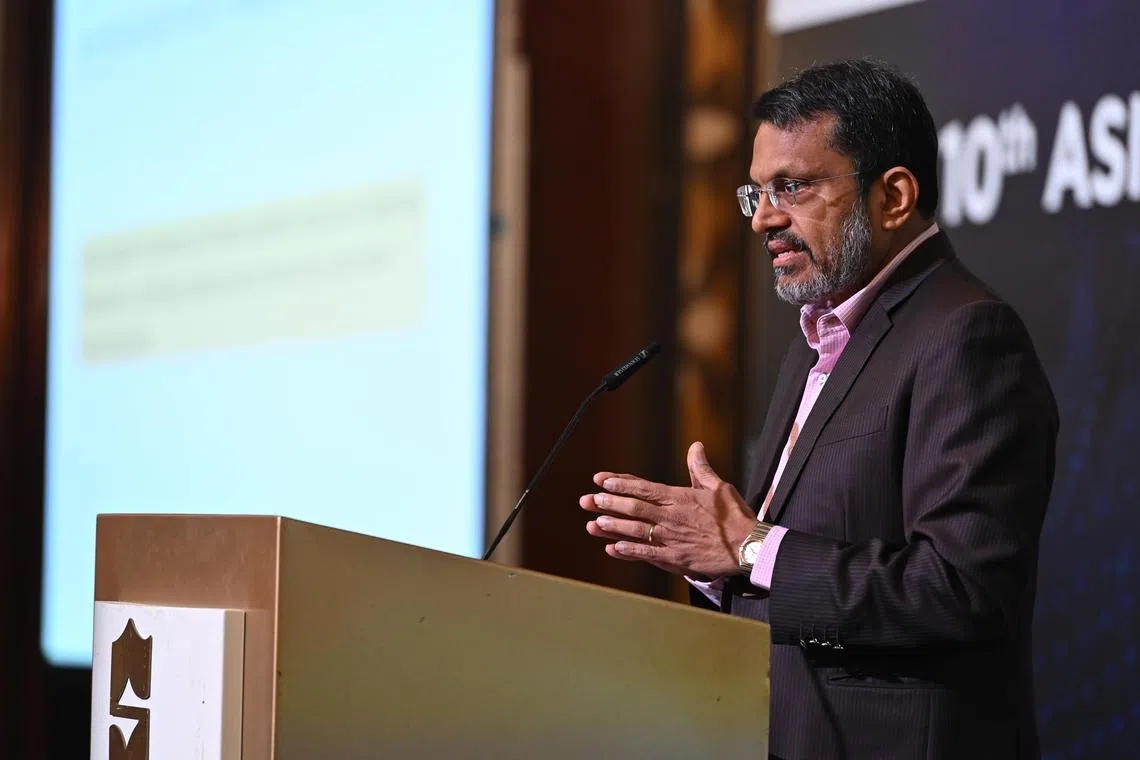For subscribers
How central banks can navigate through ‘everything, everywhere, all at once’ crises
Central bankers cannot manage a poly crisis on their own. What would help is an integrated set of policies, says MAS managing director Ravi Menon.
Sign up now: Get ST's newsletters delivered to your inbox

How central bankers can deal with multiple problems was the subject of the opening address by MAS managing director Ravi Menon at the 10th Asian Monetary Policy Forum.
PHOTO: MONETARY AUTHORITY OF SINGAPORE
Follow topic:
The core mandate of central banks is to control inflation. But in the process of doing it, many other problems can emerge. Economies can tank, leading to job and output losses, stock markets and property markets can melt down and banks can fail. In emerging markets, even currencies can crash. Or all of the above can happen, almost at the same time, and spread across countries.
How central bankers can deal with such multiple problems was the subject of the opening address by Monetary Authority of Singapore (MAS) managing director Ravi Menon at the 10th Asian Monetary Policy Forum last week. It was appropriately entitled “Everything, Everywhere, All at Once: Securing Financial Stability in an Interconnected World”.


